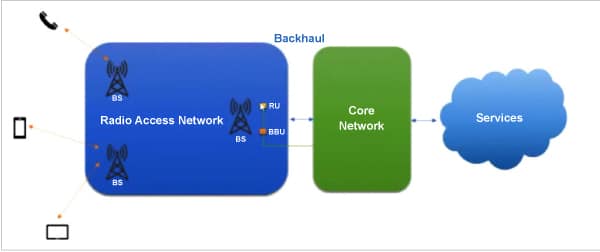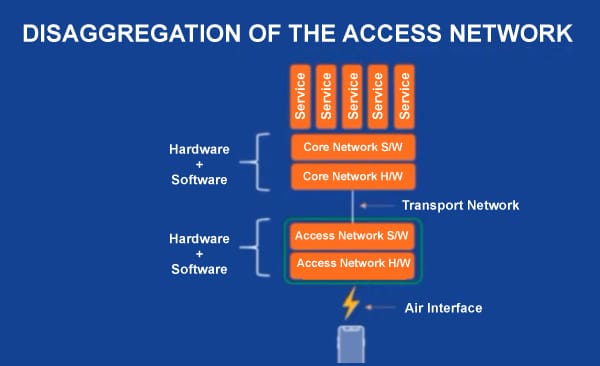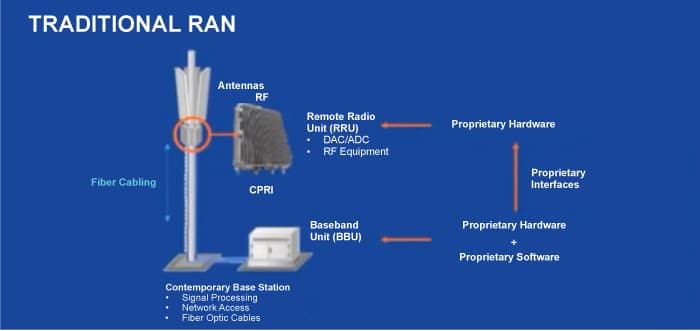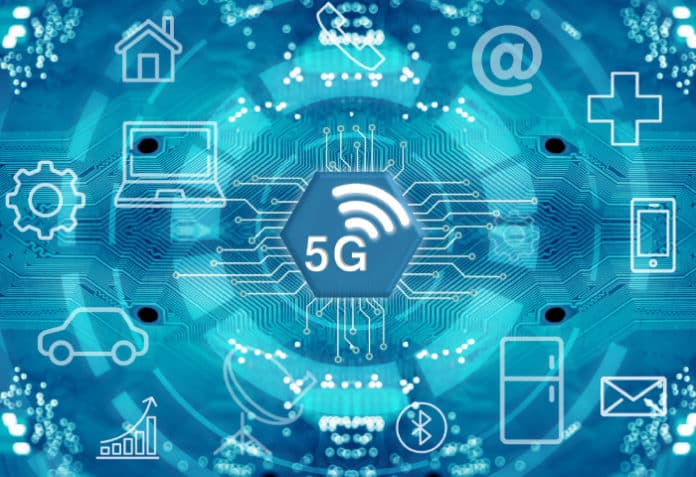Technology is evolving at a much higher pace than anyone could have envisaged a few decades ago. The telecommunications industry is no different in this respect. With 5G technology all set to be available in India, read on to understand what Open RAN brings to the table.
Many, many years ago we used analogue phones at home and the office. Then came mobile networks with 2G technology, which introduced digital voice calls along with text messaging and other data services, although speed was a major issue. This was followed by 3G technology, which ushered in smartphones and a significant improvement in the speed of the network. 4G brought along with it a very high speed network — anywhere between 2Mbps and 10Mbps — and allowed multiple devices to connect to a single network. Now, as we roll out 5G technology, we need to get ready for really high speeds – as much as 1100Mbps to 200Mbps — for downloading data. 5G also has the lowest latency rate of about one millisecond, which is far lower than what 4G has. This will improve real-time communications tremendously.
What does 5G offer?
- Enhanced mobile broadband: With 5G, augmented reality applications that require a good Internet speed with a low latency will be a lot more feasible. 5G will help to maintain the uniformity of the connection, ensuring that your experience is seamless.
- Improved mission-critical services: Self-driving cars require a real-time connection with servers, and 5G can help with that (a real-time connection helps in making a better decision). It can be of great use in the robotics sector too. In the healthcare sector, 5G can make it easier to conduct medical procedures remotely due to its ultra-low latency and strong security.
- Better connectivity of Internet of Things (IoT) devices: Many IoT devices demand good connectivity in order to function properly and provide users with a hassle-free experience. 5G will improve their overall coverage at a very affordable cost.
How does the mobile network work?
Mobile devices are a type of IoT device. These devices are connected to various towers known as base stations. A group of such cell towers forms a radio access network, which is connected to the core network. This core network is responsible for client profiling. It provides you the access for various services such as subscriber trunk dialling (STD) calls and data services. Signals from the towers are sent to the core network, and the latter is responsible for the execution of the final service. This can be any kind of service, even a simple Internet connection. So the core network acts as a gateway between the radio access network and the final services (Figure 1).

Traditional RAN (radio access network)
In a traditional RAN, the base station consists of mainly two units. The first is the radio unit (RU) or the signal transmitting unit and the second is the baseband unit (BBU), which is responsible for calculating the signals. The RU receives the signals and sends them to the BBU. These are then sent to the core network. A single vendor provides all the units and the connection between them is deployed only by that vendor. This is a very tightly coupled system, which makes it hard to change even a single component. The software is very tightly integrated inside the hardware, which presents a challenge to change it, making it difficult to upgrade the infrastructure. This increases the dependency on a single vendor, and one has to shift to a different vendor to change the entire hardware and the software, which is never convenient.
So, what is Open RAN?
Open RAN is a set of specifications for desegregating software and hardware. It allows hardware and software from different vendors to work together. Servers can now independently implement virtualisation due to this desegregation. Open RAN even makes cloud solutions possible. It lets one virtualised baseband unit support multiple radios instead of needing a proprietary or a physical unit at every cell site. This makes the infrastructure flexible and cost effective.
But why should one go for Open RAN (O-RAN)?
- Hardware and software disaggregation: There are no direct restrictions on the hardware and the software.
- Intelligence and automation: It makes management and orchestration more feasible since everything is quite open and there are standard rules to do things. It uses artificial intelligence and machine learning capabilities.
- Open internal RAN interfaces: The O-RAN lower layer basically splits a single unit into multiple units, mobilises them and makes it a multi-vendor solution.
- Rapid innovation: O-RAN has improved the innovation pace significantly due to the increased competition among vendors themselves. New companies are now coming up with their own components which tend to work a lot better.
Architecture of a typical mobile network
As can be seen in Figure 2, there is a core network and an access network, which is connected by the transport network (also known as the backhaul network). Then there is an air interface that connects a user with the service provider’s network. There are various other services that run on top of the core network. The core network and the access network contain both the hardware and software, which can be seen on the left in Figure 2.

To have a more detailed understanding of this architecture, let us understand a few things about previous generation network architectures first. All the electronics was in one or more cabinets at the bottom of a mast (tower) when 2G and 3G were in use. The RF cables would run to the antennas on top of the mast. The RF signal continuation in the RF cable was a big problem because of the congestion that used to occur. 3G and 4G allowed the industry to take a different approach that worked better. Instead of sending RF signals from the cabinet to the antennas, they were moved closer to the antennas (as can be seen in Figure 3). This ensured that there was a very minimal loss of signals.

This new piece of electronics is known as remote radio unit (RRU) or remote radio head (RRH) — at the bottom is the baseband unit. A cabinet consists of both the hardware and the software. RRU is always proprietary hardware, whereas BBU is proprietary software along with the interfaces between BBU and RRU.
Understanding the Open RAN architecture
In Open RAN, the RRU is COTS based hardware that can be purchased from any original design manufacturer (ODM), original equipment manufacturer (OEM) or RAN hardware vendor. The BBU is proprietary software with virtualised functions running on a COTS server. It is important to note that the interface between BBU and RRU is an open interface, as can be seen in Figure 4. This will allow any vendor’s software to work with a different vendor’s hardware.

The example shown in Figure 5 will help to understand this better. Let us assume that a service provider has deployed O-RAN software from vendor V1 that runs on a COTS server, while the hardware is being used from an OEM/ODM vendor A. If the service provider now decides to take components from a new hardware vendor, vendor B or vendor C (maybe because of better features), this hardware will also be compatible with the O-RAN software from vendor V1. Now, let us say that the service provider is unhappy with the software vendor V1 for some reason. In that case, he can just replace vendor V1 with a new vendor V2. Because of the open interface, the hardware from vendor A, B or C will work well with the software from vendor V2 too.

What Open RAN enables
- No vendor lock-in: With the fully interoperable and desegregated RAN, the service provider is able to choose from the RAN component manufacturers. This results in a mix of vendors as opposed to just one or two.
- Best-of-breed components: Open RAN brings more flexibility in choosing components from the best vendors. It promotes supply chain diversification as well as price competition among vendors.
- Reduced costs: Open RAN helps to reduce costs by enabling rapid innovation, vendor diversification and higher automation.
| Open RAN components |
|
Challenges with Open RAN
- Security: Network security is one of the major challenges as different vendors follow different security protocols.
- Openness: Since it is open source, it is susceptible to various kinds of threats.
Mobile network operators are benefiting tremendously with Open RAN standards. New features on the anvil will make O-RAN even more economical, while improving hardware and software integration.




